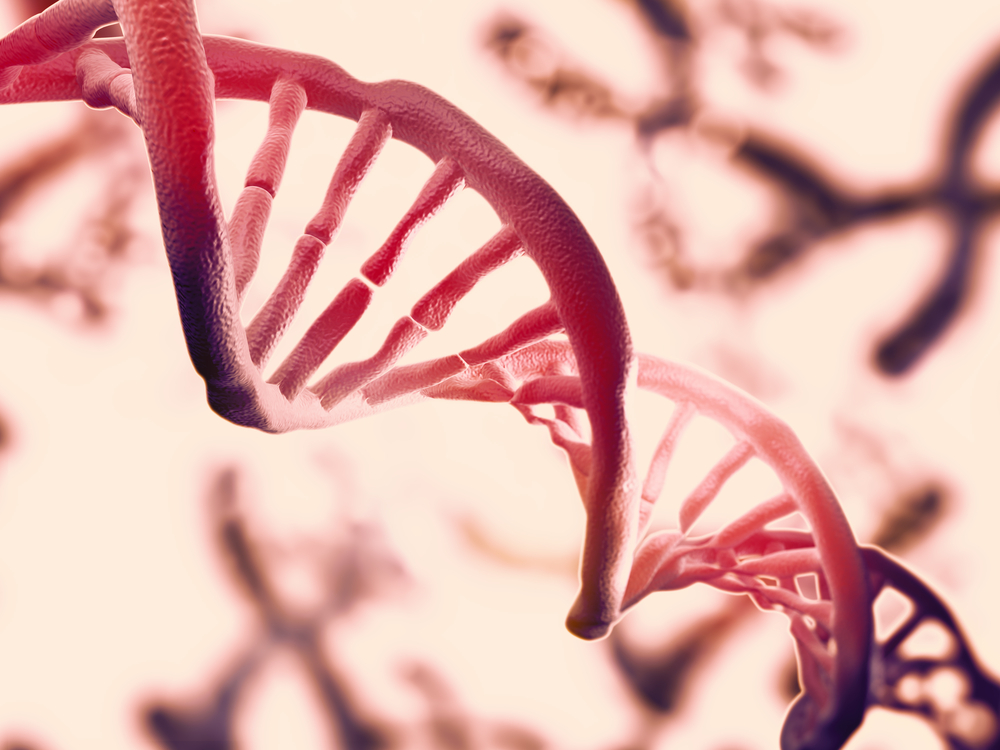Gene Therapy Repairs Mutations in Kidney Cells from Alport Patients, Study Shows

Tailored gene therapy repaired two mutations associated with Alport syndrome in specialized kidney cells from Alport patients, a preclinical study found.
The findings point to patient-specific gene therapy as a potential effective treatment for Alport syndrome.
The study, “New frontiers to cure Alport syndrome: COL4A3 and COL4A5 gene editing in podocyte-lineage cells,” was published in the European Journal of Human Genetics.
Alport syndrome is caused by mutations in the COL4A3, COL4A4, and COL4A5 genes, leading to defects in a major structural protein called type 4 collagen. This protein acts like a barrier between tissue compartments, and is essential for the normal functioning of the kidney, inner ear, and eye.
In the kidney, type 4 collagen is only produced by specialized cells called podocytes, and the production of a defective protein leads to changes in the glomerular basement membrane — which has a key role in the kidney’s filtration barrier — and kidney damage.
Kidney transplant is currently the only effective treatment for Alport syndrome. However, kidney transplantation relies on the availability of a compatible donor, requires immunosuppressive treatments that affect a patient’s lifestyle, and has no influence on other affected tissues and organs.
“In this scenario, gene therapy aiming to correct the defect at the DNA level could be envisaged as revolutionary solution for an otherwise untreatable disorder,” the researchers wrote.
Researchers in Italy showed that their newly developed gene therapy, based on the CRISPR-Cas9 gene editing system, was able to correct two mutations associated with Alport syndrome in podocytes derived from two women with the condition. One, a 23-year-old woman, carried a mutation in the COL4A5 gene and had the X-linked form of the disease, called XLAS. The other woman was 41 and had the autosomal dominant form of the disease, called ADAS, with a mutation in the COL4A3 gene.
The CRISPR-Cas9 system, which is similar to the editing system used by bacteria as a defense mechanism, allows researchers to edit parts of the genome by adding, removing, or changing specific sections of DNA.
The team had previously shown that it was possible to isolate podocytes from patients’ urine and grow them in the lab, providing a “cellular model close to the natural podocytes’ physiological condition for each individual patient and each [mutation],” the researchers wrote.
In the latest study, they developed a CRISPR-based gene therapy specific for each mutation, using a template for the healthy gene alongside with the CRISPR-Cas9 tool and the body’s own DNA repair system to correct the faulty portion of the gene. The team then tested their approach in the patient-derived podocytes grown in the lab.
Results showed that the gene therapy led to the repair of the COL4A5 mutation in 58.8% of podocytes derived from the XLAS patient and of the COL4A3 mutation in 44.2% of podocytes derived from the ADAS patient.
“These results, along with the very low percentage of [non-specific DNA deletions or insertions] (8.8% for COL4A5 and 10.4% for COL4A3), demonstrate that our strategy is highly efficient in inducing a dramatic genetic modification on the DNA,” the researchers wrote, adding that “this approach is tailored to the specific [mutation].”
The findings in patient-derived cells suggest that this approach could be evaluated in an Alport animal model, the researchers said, adding that the therapy may be delivered using a harmless virus called adeno-associated virus type 2 (AAV2), which was shown to preferentially target kidney cells.
“CRISPR/Cas9 gene therapy is likely to be efficient in the early stages of disease, where a podocyte reserve fraction is still present and can be ‘cured,’ restoring their functionality and acting downstream in GBM,” the researchers wrote.
The same type of CRISPR-based approach could be used to treat other organs affected by the disease, including the eyes and ears, through local injections of the therapy, they said.
“We are therefore strongly convinced that [Alport syndrome] will become a treatable disorder in the near future by a gene-editing, CRISPR/Cas9-based approach,” the team said.
The data also showed that the function of p53, a protein involved in DNA damage repair, may influence the efficiency of gene editing, and it should be monitored in cell therapies that use the CRISPR-Cas9 system, the study concluded.







Leave a comment
Fill in the required fields to post. Your email address will not be published.